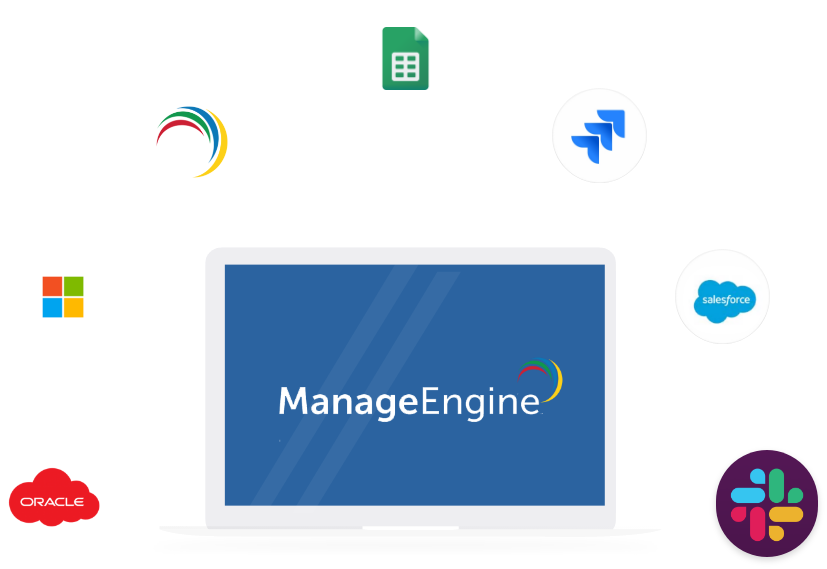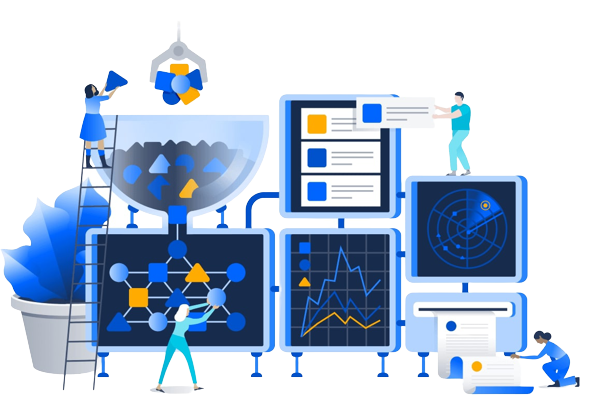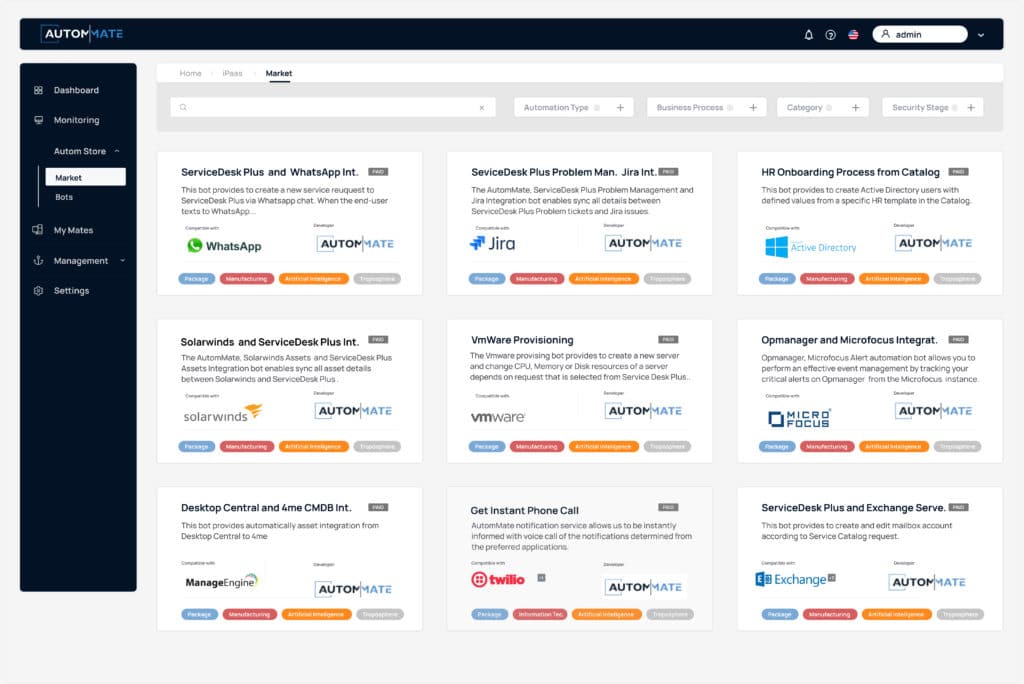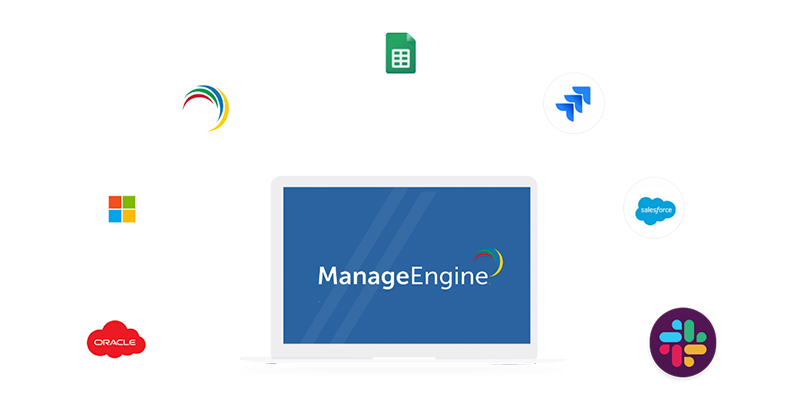ManageEngine is preferred by many companies today, thanks to the advantages it offers. A maximum level of security is achieved with ManageEngine, which makes it possible to handle different types of transactions in a short time and in a practical way. Password management and network security are among the most significant benefits of ManageEngine, but are not limited to these.
Any business of any size can benefit from the flexible solutions ManageEngine offers. A large number of products are included in ManageEngine to facilitate users’ work. Bringing IT together, ManageEngine has a comprehensive and integrated approach.

What is ManageEngine?
ManageEngine aims to enable easy management of all types of IT operations, including servers, networks, security, mobile devices, Active Directory, desktop devices, service desk, and applications. Therefore, installing, configuring, and deploying ManageEngine applications are extremely convenient. In this respect, ManageEngine is user-friendly.
ManageEngine is also widely preferred because it provides the solutions needed by the IT department at affordable prices. The customer’s demands drive the efficiency to be obtained from ManageEngine. Hence, the size of the businesses of customers is not limited to the software license.
For more information about ManageEngine, visit the website: www.manageengine.com

ManageEngine ServiceDesk Plus
ManageEngine ServiceDeskPlus ends the mess of IT workers. Thanks to its excellent customer service, users get instant answers to all their questions. In addition, the central control of companies is advanced so that their IT activities are not disrupted. IT employees have been benefiting from the advantages of ManageEngine ServiceDesk Plus for many years.
The benefits that companies get with ManageEngine Service Desk Plus are as follows:
- Codeless customizations
- Powerful integrations with IT management apps
- Deploy in the cloud or on-premises
- Intelligent automation
- Comprehensive reporting capabilities
ManageEngine ServiceDesk Plus has 3 different payment plans.
The Standard plan is generally preferred at the start and covers:
- Knowledge base
- Self-Service portal
- SLA management
- Multi-site support
- Help desk reports
- Case management
The Professional plan also includes integrated IT asset management and it covers:
- Software asset management
- Asset inventory reports
- IT asset discovery
- Procurement and contract management
- Help desk management
The Enterprise plan includes ITIL assets and projects, as well as a help desk, and is extremely comprehensive. Elements included in Enterprise are listed below.
- IT project management
- CMDB
- Incident management
- Change management
- Service catalog
- Asset management
- Problem management
- Release management
For more information check out website: ManageEngine ServiceDesk Plus Review | PCMag
ManageEngine SupportCenter Plus
ManageEngine SupportCenter Plus enables businesses to manage account and contact information, customer error reports, and service contracts with maximum efficiency. ManageEngine SupportCenter Plus is functional web-based customer support software preferred for its advanced customer experience.
ManageEngine SupportCenter Plus includes:
1. Tracking and Automation Request
Get ready to handle the tracking process smoothly! You can organize it as you wish and automate the request creation process.
2. Dashboards and Reports
Get detailed information about your help desk using real-time and intuitive Dashboards & Reports.
3. Multi-Channel Support
View and control all your preferred communication channels from a single point, including social media platforms, email, portal and phone.
4. Contracts
Easily manage multiple service contracts using support plans to invoice your customers without delay and provide timely service.
5. Business Units
Each unit within the company has its own service or product-specific configuration definition. In this way, they can work effectively an independent.
6. Database
Repetitive queries can cause a loss of productivity while working, but you can put an end to it with the database. Have the opportunity to build your knowledge base in a practical way and get the results you want the first time by accessing the solutions in a short time.
7. Billing and Time Tracking
Have the opportunity to follow all your customers in same place. You can examine the time entries in detail by using the filters.
8. Self Service Portal
Use the self-service portal by customizing it. In this way, your customers can send error reports and track them simultaneously. At the same time, it becomes possible to execute reports and search the database.

ManageEngine Desktop Central
ManageEngine Desktop Central enables technicians to manage desktops, laptops, tablets, servers, and smartphones from a central point. This efficient desktop and mobile management software greatly simplifies the work of businesses.
Routine tasks are easily automated with ManageEngine Desktop Central. These routine tasks include distributing software, managing software licenses, installing patches, managing IT assets, etc.
ManageEngine Desktop Central is supported by iOS, Windows, MAC, Android, and Linux operating systems.
ManageEngine Desktop Central includes:
- Mobile Device Management: Mobile devices with Windows, Android, or iOS operating systems can be managed from a central point. It can also be secured and configured.
- Package Distribution: EXE and MSI packages can be distributed centrally.
- Patch Management: The operating system and other third-party applications are protected against security threats, and their updates are automated.
- Asset Management: Manages software licenses, prohibited software, software usage, and IT assets.
ManageEngine OpManager
Monitor an entire network through a single interface with ManageEngine OpManager. Large enterprises, SMEs, and service providers can cost-effectively monitor & control their IT infrastructures and data centers with OpManager.
The establishment of a 24/7 monitoring system in a short time is a significant advantage. Other advantages of ManageEngine OpManager include intelligent alert engines, automated workflows, extensible templates, and configurable discovery rules.
ManageEngine OpManager features are listed below.
- All devices in the network can be followed from a practical interface.
- Monitors can become heterogeneous through brand-independent product support.
- System status is informed with the feature of generating alarms at desired or instant periods without affecting users.
- Topology can be obtained in a short time using the dynamic network mapping feature.
- Workflow automates processes without employees having to do standard work.

ManageEngine ServiceDesk Plus
ManageEngine ServiceDesk Plus provides effective tracking of IT demands within the businesses. In this way, it is ensured that the requests are resolved in a short time by being both controllable and visible. No interruption in business continuity is made possible by ManageEngine ServiceDesk. The central control system has numerous advantages in this regard. Mainly, these advantages are listed below.
- IT demands are classified, analyzed, and resolved. Analyzing the root cause of the problem reduces the likelihood of recurrence.
- All configuration items can be tracked and managed practically from a single center. The dependencies and relationships of the configuration items are mapped.
- Auto-discovery makes it possible to both maintain and discover IT asset inventory.
- Catalog creation with multi-stage approvals and customer service level agreements (SLA).
- The effect of interruptions and changes can be analyzed with visuals.
- Agent productivity increases, and downtime decreases. – End-user satisfaction increases significantly.





